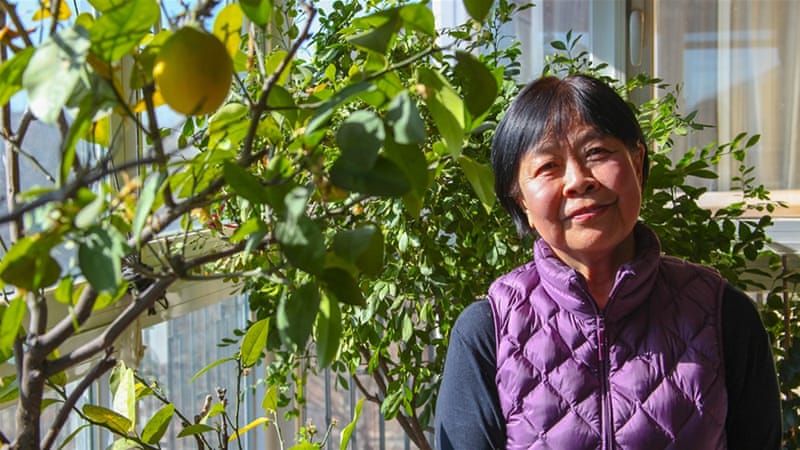|
Matthew Johnson This post is part one of a profile series in which Matthew and Natascha write about notable people in twentieth-century environmental history. What the world knew about the environmental impact of China’s Three Gorges Dam during its early planning stages was largely thanks to the efforts of Chinese journalist Dai Qing. Three Gorges Dam is a giant dam on the Yangtze (Yangzi) River that the Chinese government erected during the 1990s and 2000s. It is the world’s largest hydroelectric dam in terms of installed capacity—it can produce an impressive 22,500 megawatts—and is one of the world’s most controversial dams because it had a huge social and environmental footprint. The Three Gorges Dam was an old dream among modern Chinese engineers. The Republic of China’s first president Sun Yat-sen first envisioned building a dam at the Three Gorges in 1919, but political and economic challenges prevented the project from getting off the ground. It was not until the mid-1980s that the Chinese government resurrected the plans with the resources to see it completed. In 1988, Dai read about the project in her local newspaper. The following February she published Yangtze! Yangtze!, a collection of essays from forty scientists, economists, and journalists who opposed the dam. The essays warned that the Three Gorges Dam would have grave social and environmental consequences, such as the displacement of over one million people, and advised the Chinese government to reconsider its decision to build the dam. Dai’s collection was the first time that the public had heard about the negative impacts of Three Gorges, as engineering and impact studies had been carried out secretly. The revelations ignited one of the first environmental debates in modern Chinese history. Yangtze! Yangtze! earned Dai the dangerous label of dissident, and after she renounced her membership to the Chinese Communist Party (CCP) following the Tiananmen Square protests in June 1989, the government arrested her. Dai spent ten months in the Qincheng prison north of Beijing, enduring six of those months in solitary confinement. In October, eight months after publication and four months after Dai’s arrest, the Chinese government banned the collection and destroyed all the copies it could find. Dai was no stranger to rebellion and its consequences. She was born in Chongqing in 1941 to parents that had close connections with founding members of the CCP. When the Japanese occupied China during World War II, Japanese soldiers captured and tortured her mother and executed her father. In the 1960s, she studied military and missile engineering in school and after graduation, she got a job working on guidance systems for intercontinental missiles in a secret government lab. However, Dai became disillusioned with the CCP during the Cultural Revolution in the late 1960s and protested by marrying and getting pregnant before the approved age. As punishment, the government sent Dai and her husband to work on a farm. She became further disenchanted with the CCP when she found out that they had tortured her mother and stepfather, the latter of whom was driven to insanity and died shortly thereafter. In the 1970s, Dai returned to Beijing and began working as a spy for the Ministry of Public Security. During one of her missions the Ministry sent her to France disguised as a journalist. She played the part well and found that she actually liked writing stories. In 1982, she lost her job as a spy because colleagues exposed her identity to foreign intelligence agencies, but she had become so enamored with journalism that she decided to take up writing full time. Yangtze! Yangtze! and the protests it inspired had an impact. In 1993, the US Bureau of Reclamation withdrew financial and technical support for the dam and the World Bank decided against funding the project. However, protests could not halt construction, and the government went ahead with the project despite the loss of international support. Construction began in 1994 and its reservoir filled in 2006. Its thirty-second and final turbine was finished in 2012. In 1993, Dai won the Goldman Environmental Foundation’s prestigious annual prize—which is also known as the Green Nobel Prize—for her activism against the Three Gorges Dam. Ironically, Dai does not identify as an environmentalist. She considers herself an investigative journalist fighting for democracy and human rights. She is a political moderate and tries to use that to her advantage as an interloper between the government and the democratic movement. Despite not being a self-identified environmentalist, Dai played a vital role as an environmental defender during one of the twentieth-century’s grandest and most controversial environmental re-engineering projects. Her fearlessness and dedication to democracy brought international attention to the environmental consequences one of the world’s largest dams. Though she could not stop the dam, her efforts raised awareness about the negative impacts of mega dams, which helped to reduce their appeal among international lending agencies. For more information on Dai Qing and her fight against the Three Gorges Dam see: Dai’s page on the Goldman Foundation’s Environmental Prize website and Allison Griner’s March 2016 article in Al Jazeera. For more information on the Three Gorges Dam, see the United States Geological Survey’s summary webpage. Digital copies of Yangtze! Yangtze! and Dai’s 1998 follow up The River Dragon Has Come! can be found on Probe International’s website. An annex in the digital copy of Yangtze! Yangtze! includes a historical timeline of the project and the preface to The River Dragon Has Come! has a detailed history of both Dai Qing and the Three Gorges Dam. Matthew P. Johnson is a PhD candidate at Georgetown University who studies modern Latin American and Caribbean environmental history. His dissertation examines the social and environmental consequences of hydroelectric dams built by Brazil’s military government in the 1970s and 1980s.
1 Comment
|
EH@G BlogArticles written by students and faculty in environmental history at Georgetown University. Archives
May 2020
Categories |



 RSS Feed
RSS Feed